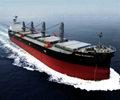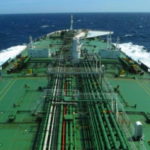Iron ore miner Ferrexpo sees softer prices in H2, firm grade differentials

Ferrexpo, a Swiss-headquartered iron ore miner with operations in Ukraine, expects some softening in iron ore prices in the second half of 2021, but believes differentials between higher and lower grade iron ore products will not return to the insignificant levels of the past as steelmakers are increasingly seeking higher-grade input for their smelting operations, the company’s interim chief executive officer Jim North told S&P Global Platts in an interview.
“The South American supply has struggled, but it will come back later this year, and we are expecting that to have an impact on high-grade supply and pellet premiums,” said North.
S&P Global Platts assessed the 62% Fe Iron Ore Index at $229.55/mt CFR North China on May 10, up $16.80/mt from May 7.
On April 1 the iron ore price topped the previous record of $195/mt set in February-March 2008 and since then has been at its highest in over 15 years.
Yet the CEO thinks strong demand for high grade iron ore is going to continue for quite some time.
“If you are subscribed to the idea of the world focusing on the decarbonization, then it is natural to think that steelmakers are going to prefer high-grade material more to offset and reduce emissions and their carbon footprint overall,” he said.
The price differential between high (65% ferrum rich), medium (62% Fe) and low grade (58% Fe) materials is going to adjust somewhat, but Ferrexpo expects only a little softening in premiums moving into the second half of 2021 and 2022.
Historically, the differential between 65%, 62% and 58% iron ore products used to be as low as $5-$8.
The differential between 65% and lower grade products is now about $30. This is very high and bound to get to something more reasonable, North said.
“We are expecting that to narrow, but still to be maintained at a larger margin than it was historically. It is going to be above $15 but below $25, it is going to be in that range, that is our view,” he said.
Supporting the margins at higher levels is steelmakers’ growing preference for more economical feedstocks. The Chinese want to reduce emissions and people everywhere are looking to drive up the efficiency at steel mills through reducing the amount of power input per ton of steel, which can be achieved with higher grade feeds for smelting, North said.
The share of high-grade material in the charge will grow as steelmakers will be looking for a higher percentage of direct charged material – high grade lump or pellets.
Grade challenge
The 58% grade material is, on the contrary, likely to be discounted further going into the future, because low-grade supply is plentiful, while demand for it is dwindling, according to North.
“If you look at what happened in Australia — the issues with Rio Tinto [an Anglo-Australian multinational and the world’s second largest metals and mining corporation, behind BHP], when they breached some heritage rules and blew up a cave,” said North.
In May 2020, to expand one of its mines, Rio Tinto demolished an archeologically valuable aboriginal cave in the Pilbara region, Western Australia. The action caused an uproar and slowed the approvals and access to deposits in Australia.
“It is only helping the high-grade argument because one thing the Pilbara [where Rio Tinto’s iron ore mining operations are concentrated] has in plenty is medium and low grade. There is not a lot of high-grade resource, and the Australian mining industry is facing a challenge of lifting the grade,” said the CEO.
This and the likelihood of the heritage issues in Australia becoming more complex is going to slow down the process of bringing up higher grade resources to the advantage of high-grade producers.
Hundreds of millions of iron ore tons are coming out of Australia. The problem they are going to be lower grade unless Australian producers invest in upgrading in concentrators and washing facilities to improve grade, according to North.
Incremental growth
Ferrexpo envisages about the same pellet production this year as it was last year — around 11 million mt. Normally half of its output is exported across Ukraine’s western border and the remainder is shipped from the Black Sea.
The company is incrementally growing its business and so its pellet sales will increase year on year, North said.
It is investing in a brownfields’ expansion program; last year it commissioned a new grinding mill known as Section 9, and it has recently signed a deal to buy high pressure grinding rolls for existing mills.
It has about 10-11-month lead times on those so they will be installed next year bringing on additional concentrator capacity by 2023.
Ferrexpo is also expanding its pelletization capacity. One of its lines was upgraded last year, another one in Q1, and the remaining two lines’ upgrades will follow this year.
As a result, in H2 2021, the total installed capacity for pellets will increase by half a million tons to 12.5 million mt/year.
At the same, Ferrexpo is looking to grow in the premium pellet segment. Last year, it sold 300,000 mt of 67.5% pellets, destined for the direct reduced iron market. That is just under 3% of its overall sales, but it expects larger shipments going forward.
Source: Platts

 Hellenic Shipping News Worldwide Hellenic Shipping News Worldwide, Online Daily Newspaper on Hellenic and International Shipping
Hellenic Shipping News Worldwide Hellenic Shipping News Worldwide, Online Daily Newspaper on Hellenic and International Shipping





















 PG-Software
PG-Software